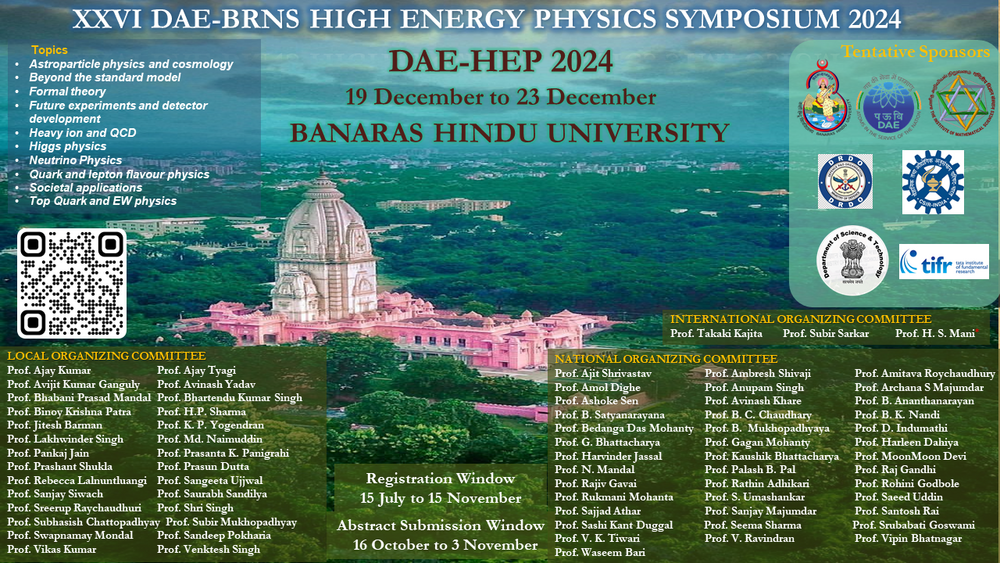Speaker
Description
In this work, we carry out a systematic investigation of thirty six possible structures of neutrino mass matrix, $M_\nu$ having textures of one zero element and one vanishing sub-trace taking the latest $3\sigma$ neutrino data. Correlation plots of the ratio of solar to atmospheric mass splittings, $R_\nu$ and the Dirac CP phase $\delta$ for each texture are examined and found only fourteen textures phenomenologically viable with $3\sigma$ range. The restricted ranges of $\delta$ for allowed textures are used to predict theoretically the Majorana CP Phases ($\alpha$ and $\beta$) which are yet to be measured experimentally. With these results, we also calculate the Majorana mass term, $|m_{ee}|$ on which the neutrinoless double beta decay rate depends, and the Jarlskog invariant, $J_{cp}$ for the strength of CP violation and also study the correlations between the CP phases and the mixing angle $\theta_{23}$. Besides them, we also checked the experimental compatibilities for the parameters effective electron neutrino mass $m_{\nu_e}$, total `sum' of neutrino masses $\Sigma_{\nu}$. The consistency of mass orderings of textures is checked with $\frac{m_{3}}{m_{1}}$ and phenomenological identification of textures having no octant degeneracy for $\theta_{23}$. Finally, the flavor symmetry realization of textures is done under the symmetry group $S_3\times Z_4$ in Type II seesaw mechanism.
| Field of contribution | Phenomenology |
|---|

